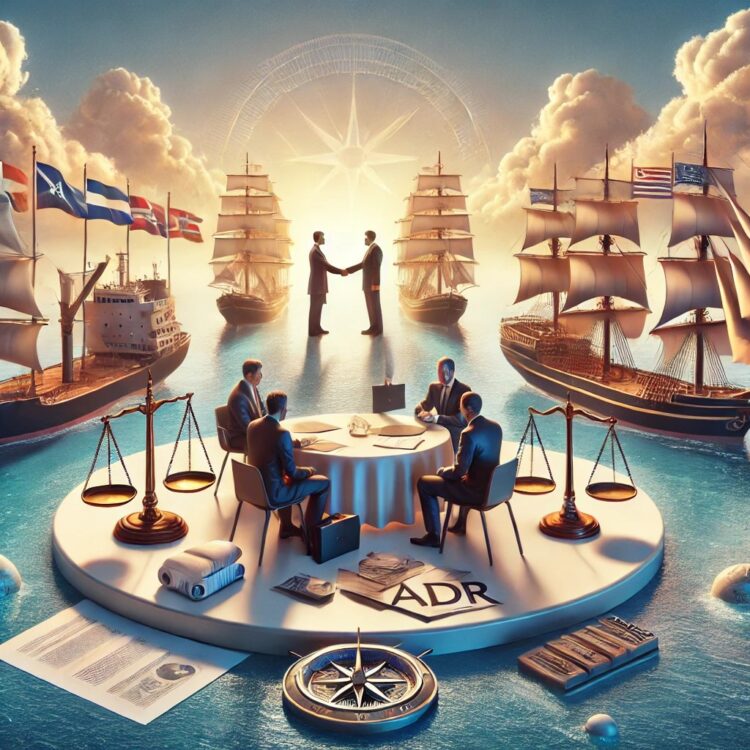
By Michael J. Tyler
Alternative Dispute Resolution (ADR) has become a transformative force in modern legal practice. Its application in resolving conflicts under the United Nations Convention on the Law of the Sea (UNCLOS) demonstrates its capacity to facilitate innovative, efficient, and peaceful outcomes. The law of the sea, inherently complex and often entangled with sovereignty, environmental concerns, and economic interests, presents a fertile ground for ADR techniques.
The Complexity of Maritime Disputes
Maritime disputes often involve overlapping jurisdictional claims, resource allocation, and environmental conservation—issues that transcend national borders. Traditional litigation under international tribunals like the International Tribunal for the Law of the Sea (ITLOS) can be time-consuming and adversarial, sometimes exacerbating tensions. ADR, with its flexible, interest-based approach, offers a pathway to collaborative solutions.
Key ADR Techniques in Maritime Disputes
- Mediation: Mediation involves a neutral third party facilitating dialogue between disputing states. Unlike litigation, which results in a win-lose scenario, mediation focuses on creating mutually beneficial agreements. For instance, disputes over exclusive economic zones (EEZs) can benefit from mediation to develop joint management agreements for shared resources.
- Arbitration: Arbitration, while formal, is less rigid than court proceedings. It allows parties to choose arbitrators with specific expertise in maritime law and to agree on procedural rules, ensuring a tailored resolution. Cases such as the Philippines v. China arbitration over the South China Sea underline the value of arbitration when negotiation fails.
- Negotiation: Direct negotiation remains a cornerstone of maritime dispute resolution. With ADR principles, negotiations can be enhanced by focusing on shared interests, such as preserving marine biodiversity or optimising trade routes, rather than entrenched positions.
- Conciliation: Conciliation is a hybrid of mediation and arbitration. A conciliator investigates the dispute and proposes solutions. This approach has been successfully applied in disputes over maritime boundaries, providing a foundation for equitable agreements.
Case Studies and Examples
- Philippines v. China Arbitration (South China Sea Dispute): In this landmark case, the Philippines invoked arbitration under UNCLOS to challenge China’s expansive claims in the South China Sea. While China rejected the proceedings, the tribunal’s ruling in 2016 highlighted the role of ADR in clarifying maritime entitlements. Although this case did not directly involve mediation or negotiation, it underscores the potential of ADR to address complex jurisdictional disputes.
- Norway and Russia’s Barents Sea Agreement (2010): Mediation and negotiation played pivotal roles in resolving a 40-year maritime boundary dispute between Norway and Russia. The agreement established a clear boundary and included provisions for joint resource management, showcasing the power of ADR to foster cooperation.
- Australia and Timor-Leste Conciliation (2018): Under UNCLOS, conciliation was used to settle a protracted dispute over maritime boundaries and resource sharing in the Timor Sea. The process resulted in a treaty that allowed for equitable resource distribution, demonstrating the effectiveness of conciliation in balancing competing interests.
- Canada and the United States (Gulf of Maine Dispute): This boundary dispute, resolved through a combination of negotiation and arbitration, set a precedent for the peaceful resolution of overlapping maritime claims. The outcome established a fair division of fishing zones and resource rights, highlighting the adaptability of ADR methods.
Benefits of ADR in Maritime Contexts
- Efficiency: ADR processes are typically faster than tribunal litigation, enabling timely resolutions essential for issues like environmental crises or resource management.
- Cost-Effectiveness: By avoiding prolonged legal battles, ADR reduces costs for all parties involved.
- Preservation of Relationships: ADR’s collaborative approach fosters ongoing diplomatic and economic relationships, crucial in interconnected maritime regions.
- Innovative Solutions: ADR allows for creative, context-specific resolutions, such as joint development zones or conservation pacts, which may not be achievable through rigid legal frameworks.
Challenges and Considerations
While ADR offers significant advantages, it is not without challenges. Power imbalances between states, lack of enforceability in some contexts, and the voluntary nature of ADR can hinder its effectiveness. Ensuring neutrality, transparency, and buy-in from all parties is essential to overcoming these hurdles.
A Vision for the Future
The increasing reliance on ADR in maritime disputes signifies a shift towards more cooperative international relations. By prioritising dialogue and shared interests, ADR aligns with UNCLOS’s spirit of fostering peaceful uses of the seas. As practitioners, it is our role to advocate for and refine these mechanisms, ensuring they remain adaptable to the evolving challenges of maritime governance.
In my practice, I have witnessed the transformative power of ADR in achieving outcomes that litigation alone could not deliver. For disputes under the law of the sea, ADR is not just an alternative—it is a necessity for sustainable and equitable conflict resolution.